The 2017 Irish Farmers Journal Agricultural Land Price Report can exclusively reveal that the average price paid for land across the 26 counties in the Republic of Ireland in 2017 was €9,088/acre. This is an increase of 3.61% on the 2016 figures, which stood at €8,771/acre. It is the first time since 2014 that the average price per acre has risen over €9,000/acre. That year, the price reached €9,890/acre, with 86,408 acres offered for sale, both figures representing a big jump. The increase in 2017 is much steadier, with a gradual rise in supply and price.
The improving prices can be seen across the country, with 19 counties showing an increase in land prices in 2017. Seven of these counties saw a price rise of over 10%, with Laois experiencing the highest jump of 22.1%. Just seven counties saw a drop in average values, with Waterford, Monaghan, Donegal and, surprisingly, Kilkenny seeing drops of over 10%.
The influence of commodity price volatility was plain to see in 2017. A bumper year for dairy men was counteracted by another poor year for grain. Beef and sheep farmers had a better year than in 2016 but were largely unable to compete with the dairy drive. It was just over 12 months ago when the milk price was on the floor and confidence was right there with it. What a difference a year makes. There is little doubt that land price has significantly benefited from this renewed dairy vigour.
Dairy
Dairy has been the big driver of land price in 2017. A better milk price, increased production and expanding enterprises have meant the appetite for land continues to surge. Counties such as Cork, Tipperary and Laois have seen prices rise over 10% as a direct result of this hunger. In instances where two dairy farmers have competed for good-quality ground, or indeed any sort of ground, some extraordinary prices were reached. Agents across the country have noted that dairy farmers were in a league of their own and, with the strength of the milk cheque last year, dairy men and women had the financial muscle to outbid other enterprises.
Some auctioneers said beef farmers were finding the going tough, especially in areas where dairy farmers dominated. Others said they were competing
Beef and tillage farmers certainly seemed to lag behind in many parts of Ireland. Another poor year for grain saw tillage farmers under further pressure to compete with dairy. However, there were indications that stronger tillage farmers across Leinster were able to match dairy farmers, though not as frequently as tillage farmers would like.
The level of beef farmer participation in the land market this year varied. Some auctioneers said beef farmers were finding the going tough, especially in areas where dairy farmers dominated. Others said they were competing. Last year was certainly a stronger year for beef and sheep farmers than 2016, and this certainly contributed to a stronger land market.
West
What is evident is the clear disparity between the west and the rest of the country. It was a solid if not positive year in the south and east, with an air of optimism among auctioneers. However, in the west the market was slightly subdued. Agents were quoted as saying prices held their own, but demand was not over the top. With the exception of Roscommon, which saw an average price rise of over 18%, prices remained steady. Some parcels were difficult to sell unless there was an adjoining landowner, while forestry remained the biggest competition in 2017. In parts, if the land was not suitable for forestry, it would be difficult to sell. It was clear that finance wasn’t all that easy to come by in the region, especially for drystock and suckler farmers. The poor weather almost certainly had an adverse effect, if not on land sales, certainly on sentiment. Continuous rain in the back end of the year in many parts of the west meant farmer morale was low. That being said, agents noted that good land will sell. The market for smaller parcels is still being dominated by cash buyers; however, this trend is nationwide. Large parcels are slow to shift as farmers would to seek additional finance. One agent noted that young farmers are also receiving financial backing from parents to buy certain parcels.
Supply tight
The supply of land offered to the market in 2017 totalled 78,350 acres, up 6.2% on 2016 when 73,778 acres were offered. Leinster offered the greatest acreage, with 33,689, closely followed by Munster at 22,720, Connacht at 15,885 and Ulster at 6,056. While the supply has increased in a general sense, one of the most frequent observations from across Ireland last year was the scarcity of land coming to the market. This was a consistent theme among agents in most regions.
Auctioneers said the acreage offered was well back and there wasn’t enough supply to fulfil demand at times. From our county-by-county breakdown, we noticed that supply was back in 13 counties, with the remaining 13 counties all seeing a rise in land offered. Interestingly, there was a very noticeable reduction in supply in the border counties, with Donegal, Monaghan, Cavan and Louth all seeing less land on the market. Whether this is a direct impact of Brexit, it is hard to know for certain, but it seems coincidental.
The Brexit question
Some agents have said Brexit had a negative impact in 2017, both on sentiment and on the price of land. It must be said, however, that only a handful of agents mentioned this, all of whom were located in predominantly drystock country. It is therefore difficult to ascertain whether land price was directly affected by Brexit itself or an inability of farmers in the area to pay the large sums for land that would be seen in predominantly dairy counties.
Leasing
Leasing was a major factor in the land market in 2017. The Irish Farmers Journal began collecting information from auctioneers around Ireland this year to get a general idea of how much farmers were paying to lease land. With this information, we got a comprehensive breakdown of the current leasing market. Our database shows that the average price for leased land in Ireland is €196/acre.
Almost every agent said lease prices were up in 2017, as the demand rose with more and more farmers entering into long-term agreements. There was also a scarcity of product evident around Ireland, with very little leased land coming on to the market. There is a definite correlation between the dairy drive and the demand for leased land nationwide, as dairy men are willing to pay top dollar for ground, which is raising the prices in certain regions. Young farmers have also increased the hunger for leased ground. Leasing is a popular option for young farmers as some may not be able to obtain finance to purchase ground while others see a long-term agreement as a way of giving them security that conacre does not offer.
On the topic of conacre, there is a general shift from this form of rent to leasing. The tax implications have certainly accelerated this process, but other factors have also contributed. From the leasing database, we found that the western counties are slower to move to longer-term leasing, with agents saying smaller suckler farmers still prefer the 11-month option. As one moves towards the east and south, the long-term option is becoming more and more popular.
Forestry
Forestry yet again is a major player in the Irish land market in 2017, with agents, predominantly in the western region, noting a strong appetite for land suitable for planting. With investment funds considering forestry a low-risk option, international pension funds were very prominent in the market last year. Individual investors and farmers are also availing of the lucrative premiums obtained from planting in Ireland at the moment. To a lesser degree, smaller UK investment funds are active in the Irish forestry market.
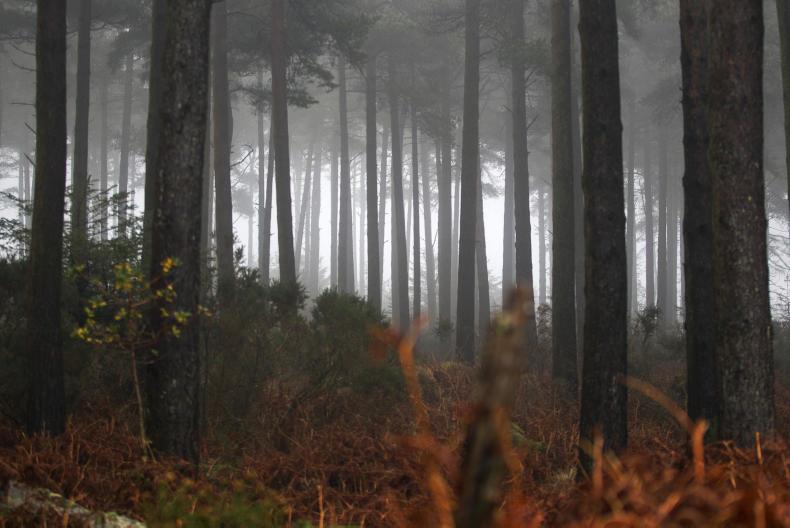
Forest in the mist on a heavy, rainy dayLand suitable for forestry is making anything from €3,000/acre to highs of over €5,000/acre for parcels suitable for planting.
Agents have said that if forestry companies have not bought land suitable for planting, they have almost certainly been the highest underbidder. The reality for farmers in this instance is that competition is heavily increased. The price of marginal land in areas is rising and the gap between the highest quality and lowest quality land in these regions is closing. The changes to the Grant and Premium Scheme 2014 has reinvigorated the market for forestry land and this demand doesn’t seem like floundering. As long as tax-free income on clearfell and lucrative premiums of €560/ha per year are received, the demand for forestry land will not waver.
Indirect impacts of forestry
Another interesting point is the indirect impact forestry land is having on neighbouring counties. Agents have said farmers who have planted land and received premiums are using these premiums to lease or buy land in neighbouring counties. For example, a number of auctioneers in Connacht have noted that farmers in Leitrim, Sligo and as far away as Cavan have planted parcels of land and are then leasing or buying land in north Roscommon. This was evident in our land leasing database, which highlighted that some of the highest leasing prices in Connacht were in north Roscommon.
Unrealistic prices
One notable feature of the market that auctioneers highlighted last year was some vendors’ unrealistic expectations for the price of land. A number of agents gave examples of some clients holding out for €10,000/acre or just valuing the holding much higher than a buyer would be willing to pay. In these cases, the targets were not viable and the properties were either withdrawn or remain on the market.
Businesspeople more prominent
More businesspeople were active in the market in 2017. For the eighth consecutive year, land prices have remained between €8,700/acre and just under €10,000/acre. With land prices halving from 2007 to 2009, the market seems to have corrected itself. This relative stability has encouraged businesspeople to invest in the market, with land believed to be a solid, low-risk investment. This was not area-specific either, with agents from around the country saying businesspeople were active in the market. Businesspeople with equine interests have also been to the forefront. It is believed Frank Dunne of Dunnes Stores snapped up Ballymacoll Stud for €8.15m in June. Dunne is an adjoining landowner to Ballymacoll. In Wicklow, Ballinteskin Stud was sold under the hammer for €2.53m to businessman Luke Comer. Ironically, Comer was believed to be the highest underbidder to Dunne for Ballymacolll Stud, hence the final price of €27,000/acre.
Equine men are certainly active this year. Whether buying large stud farms such as Ballymacoll, Ballinteskin or Loughtown Stud in Kildare or buying smaller parcels to expand their current holdings, equine men are making an impact. Kildare was one such county seeing an equine presence, as was Tipperary, with multiple auctioneers in the country citing a notable well-known equine buyer purchasing a number of adjoining parcels in the county.
One interesting feature of the year was the number of smaller residential holdings bought by businesspeople with a farming interest. These smaller holdings were typically located near tourist hotspots with a small parcel of land for hobby purposes. This was noted by numerous auctioneers from Cork in particular.
In general terms, residential holdings are seeing a premium in terms of price. From our data, residential holdings fetched an average of €10,100/acre last year, with non-residential holdings making an average of just over €8,650/acre.
The auction room
The auction room was a nice mix of the good, the bad and the unexpected in 2017.
Success at auction is back slightly, with 47% selling under the hammer compared with 52% in 2016. In total, 410 properties were offered to auction in 2017. Of these 191 were sold under the hammer and 219 were withdrawn, with 70 of these sold privately after.
The number of auctions is up on last year’s figure of 405. Again, the fate of auctions depended on the individual properties offered on the day. Parcels that had adjoining farmers interested commanded higher prices and these auctions tended to fly. On other occasions auctions were slow and unsuccessful. This method of sale can also be very peculiar, and shadowboxing can be one feature evident in the auction room. On numerous occasions this year, an auction that was expected to fly was completely stagnant as farmers sat on their hands waiting for the other to move. Some counties found the going very difficult at auction last year. Statistically, Wicklow and Clare had a very difficult year, with success rates of under 25%, the lowest in the country. Limerick and Offaly both had a fruitful auction rooms in 2017, with success rates of almost 70%.
Limerick saw one of the most impressive auctions of the year back in September for 72 acres in Cloghaviller, Herbertstown. The stunning lands were fiercely contested by six bidders at a packed auction room, before eventually settling under the hammer for an exceptional €920,000 or €12,780/acre.
Auctions accounted for 26.7% of all lands offered in 2017, with private treaty making up over 71.6%. While auction can be a great method to get a sale wrapped up quickly, it can deter interested parties who are heavily dependent on obtaining finance for a sale. Agents said some private treaty sales were slow and painstaking, especially if either the vendor or potential buyers were picky. However, it remains the most popular method of sale in Ireland in 2017. In total, there were 497 successful private treaty sales in 2017.
There was a dramatic increase in the number of tenders around the country. In total, there was 25 tenders offered around the country last year, up from two in 2016. Ten of these sold. Some 12 counties had land up for tender last year, with just Louth and Cork offering this form of sale in 2016.
Stamp duty
Also in this year’s report, we look over the main talking points and impacts of the change in stamp duty from 2% to 6% in October’s budget. While it was the main feature of last year’s budget in terms of land, its impact has been varied. For some, it had a major bearing on land sales, effectively pushing the end cost of the sale beyond some farmers’ budgets and thus the transaction fell through. Others saw little or no change to demand for land, but are concerned about the impact as we enter into 2018. An auctioneer in the west told me that the new tax implication is having virtually no effect on forestry companies or their willingness to buy. A handful of agents have expressed fears over larger holdings, whether or not the 4% rise would reduce the demand for such packages or indeed reduce the price. This will be an interesting aspect of the 2018 land market.
Busy end of year
Another noticeable trend was the number of sales just closing off before Christmas. While there was, in a general sense, relative consistency throughout the year, November and December did seem busy for sales closing off. This was an interesting observation, with no real concrete reason, but one explanation may be that dairy men were in a stronger position toward the end of the year after a number of strong milk cheques.
It is difficult to predict how 2018 will fare, but milk price is certain to have a major bearing in many parts of Ireland. Strong milk cheques in 2017 would suggest that the first half of 2018 will remain strong, with dairy farmers or new entrants still hungry to expand their holdings. There is also evidence of dairy men willing to travel somewhat for silage or heifer-rearing ground. The idea that dairy farmers are willing to travel to a certain degree will give confidence to farmers selling certain parcels with no interested adjoining farmers.
With substantial monies spent on infrastructural projects on dairy farms across Ireland, agents worry that a drop in milk price could slow the land market as dairy farmers will pull in the reins
Land for the large part, however, is at the mercy of commodity prices. While a high milk price in 2017 certainly drove land prices on, agents are cautiously optimistic about 2018. While many believe it will be another solid year, reservations have been expressed should milk price fall. With substantial monies spent on infrastructural projects on dairy farms across Ireland, agents worry that a drop in milk price could slow the land market as dairy farmers will pull in the reins.
For the first half of this year, it will be interesting to see if tillage farmers will be able to compete with dairy. A number of poor years in terms of the price of grain may begin to catch up with tillage farmers and reduce their ability to pay.
Considering the trend since 2009, it is unlikely that 2018 will dish out any major surprises. Famous last words, says you.
Read more
Exclusive: €313m of farmland sold in 2017
The 2017 Irish Farmers Journal Agricultural Land Price Report can exclusively reveal that the average price paid for land across the 26 counties in the Republic of Ireland in 2017 was €9,088/acre. This is an increase of 3.61% on the 2016 figures, which stood at €8,771/acre. It is the first time since 2014 that the average price per acre has risen over €9,000/acre. That year, the price reached €9,890/acre, with 86,408 acres offered for sale, both figures representing a big jump. The increase in 2017 is much steadier, with a gradual rise in supply and price.
The improving prices can be seen across the country, with 19 counties showing an increase in land prices in 2017. Seven of these counties saw a price rise of over 10%, with Laois experiencing the highest jump of 22.1%. Just seven counties saw a drop in average values, with Waterford, Monaghan, Donegal and, surprisingly, Kilkenny seeing drops of over 10%.
The influence of commodity price volatility was plain to see in 2017. A bumper year for dairy men was counteracted by another poor year for grain. Beef and sheep farmers had a better year than in 2016 but were largely unable to compete with the dairy drive. It was just over 12 months ago when the milk price was on the floor and confidence was right there with it. What a difference a year makes. There is little doubt that land price has significantly benefited from this renewed dairy vigour.
Dairy
Dairy has been the big driver of land price in 2017. A better milk price, increased production and expanding enterprises have meant the appetite for land continues to surge. Counties such as Cork, Tipperary and Laois have seen prices rise over 10% as a direct result of this hunger. In instances where two dairy farmers have competed for good-quality ground, or indeed any sort of ground, some extraordinary prices were reached. Agents across the country have noted that dairy farmers were in a league of their own and, with the strength of the milk cheque last year, dairy men and women had the financial muscle to outbid other enterprises.
Some auctioneers said beef farmers were finding the going tough, especially in areas where dairy farmers dominated. Others said they were competing
Beef and tillage farmers certainly seemed to lag behind in many parts of Ireland. Another poor year for grain saw tillage farmers under further pressure to compete with dairy. However, there were indications that stronger tillage farmers across Leinster were able to match dairy farmers, though not as frequently as tillage farmers would like.
The level of beef farmer participation in the land market this year varied. Some auctioneers said beef farmers were finding the going tough, especially in areas where dairy farmers dominated. Others said they were competing. Last year was certainly a stronger year for beef and sheep farmers than 2016, and this certainly contributed to a stronger land market.
West
What is evident is the clear disparity between the west and the rest of the country. It was a solid if not positive year in the south and east, with an air of optimism among auctioneers. However, in the west the market was slightly subdued. Agents were quoted as saying prices held their own, but demand was not over the top. With the exception of Roscommon, which saw an average price rise of over 18%, prices remained steady. Some parcels were difficult to sell unless there was an adjoining landowner, while forestry remained the biggest competition in 2017. In parts, if the land was not suitable for forestry, it would be difficult to sell. It was clear that finance wasn’t all that easy to come by in the region, especially for drystock and suckler farmers. The poor weather almost certainly had an adverse effect, if not on land sales, certainly on sentiment. Continuous rain in the back end of the year in many parts of the west meant farmer morale was low. That being said, agents noted that good land will sell. The market for smaller parcels is still being dominated by cash buyers; however, this trend is nationwide. Large parcels are slow to shift as farmers would to seek additional finance. One agent noted that young farmers are also receiving financial backing from parents to buy certain parcels.
Supply tight
The supply of land offered to the market in 2017 totalled 78,350 acres, up 6.2% on 2016 when 73,778 acres were offered. Leinster offered the greatest acreage, with 33,689, closely followed by Munster at 22,720, Connacht at 15,885 and Ulster at 6,056. While the supply has increased in a general sense, one of the most frequent observations from across Ireland last year was the scarcity of land coming to the market. This was a consistent theme among agents in most regions.
Auctioneers said the acreage offered was well back and there wasn’t enough supply to fulfil demand at times. From our county-by-county breakdown, we noticed that supply was back in 13 counties, with the remaining 13 counties all seeing a rise in land offered. Interestingly, there was a very noticeable reduction in supply in the border counties, with Donegal, Monaghan, Cavan and Louth all seeing less land on the market. Whether this is a direct impact of Brexit, it is hard to know for certain, but it seems coincidental.
The Brexit question
Some agents have said Brexit had a negative impact in 2017, both on sentiment and on the price of land. It must be said, however, that only a handful of agents mentioned this, all of whom were located in predominantly drystock country. It is therefore difficult to ascertain whether land price was directly affected by Brexit itself or an inability of farmers in the area to pay the large sums for land that would be seen in predominantly dairy counties.
Leasing
Leasing was a major factor in the land market in 2017. The Irish Farmers Journal began collecting information from auctioneers around Ireland this year to get a general idea of how much farmers were paying to lease land. With this information, we got a comprehensive breakdown of the current leasing market. Our database shows that the average price for leased land in Ireland is €196/acre.
Almost every agent said lease prices were up in 2017, as the demand rose with more and more farmers entering into long-term agreements. There was also a scarcity of product evident around Ireland, with very little leased land coming on to the market. There is a definite correlation between the dairy drive and the demand for leased land nationwide, as dairy men are willing to pay top dollar for ground, which is raising the prices in certain regions. Young farmers have also increased the hunger for leased ground. Leasing is a popular option for young farmers as some may not be able to obtain finance to purchase ground while others see a long-term agreement as a way of giving them security that conacre does not offer.
On the topic of conacre, there is a general shift from this form of rent to leasing. The tax implications have certainly accelerated this process, but other factors have also contributed. From the leasing database, we found that the western counties are slower to move to longer-term leasing, with agents saying smaller suckler farmers still prefer the 11-month option. As one moves towards the east and south, the long-term option is becoming more and more popular.
Forestry
Forestry yet again is a major player in the Irish land market in 2017, with agents, predominantly in the western region, noting a strong appetite for land suitable for planting. With investment funds considering forestry a low-risk option, international pension funds were very prominent in the market last year. Individual investors and farmers are also availing of the lucrative premiums obtained from planting in Ireland at the moment. To a lesser degree, smaller UK investment funds are active in the Irish forestry market.

Forest in the mist on a heavy, rainy dayLand suitable for forestry is making anything from €3,000/acre to highs of over €5,000/acre for parcels suitable for planting.
Agents have said that if forestry companies have not bought land suitable for planting, they have almost certainly been the highest underbidder. The reality for farmers in this instance is that competition is heavily increased. The price of marginal land in areas is rising and the gap between the highest quality and lowest quality land in these regions is closing. The changes to the Grant and Premium Scheme 2014 has reinvigorated the market for forestry land and this demand doesn’t seem like floundering. As long as tax-free income on clearfell and lucrative premiums of €560/ha per year are received, the demand for forestry land will not waver.
Indirect impacts of forestry
Another interesting point is the indirect impact forestry land is having on neighbouring counties. Agents have said farmers who have planted land and received premiums are using these premiums to lease or buy land in neighbouring counties. For example, a number of auctioneers in Connacht have noted that farmers in Leitrim, Sligo and as far away as Cavan have planted parcels of land and are then leasing or buying land in north Roscommon. This was evident in our land leasing database, which highlighted that some of the highest leasing prices in Connacht were in north Roscommon.
Unrealistic prices
One notable feature of the market that auctioneers highlighted last year was some vendors’ unrealistic expectations for the price of land. A number of agents gave examples of some clients holding out for €10,000/acre or just valuing the holding much higher than a buyer would be willing to pay. In these cases, the targets were not viable and the properties were either withdrawn or remain on the market.
Businesspeople more prominent
More businesspeople were active in the market in 2017. For the eighth consecutive year, land prices have remained between €8,700/acre and just under €10,000/acre. With land prices halving from 2007 to 2009, the market seems to have corrected itself. This relative stability has encouraged businesspeople to invest in the market, with land believed to be a solid, low-risk investment. This was not area-specific either, with agents from around the country saying businesspeople were active in the market. Businesspeople with equine interests have also been to the forefront. It is believed Frank Dunne of Dunnes Stores snapped up Ballymacoll Stud for €8.15m in June. Dunne is an adjoining landowner to Ballymacoll. In Wicklow, Ballinteskin Stud was sold under the hammer for €2.53m to businessman Luke Comer. Ironically, Comer was believed to be the highest underbidder to Dunne for Ballymacolll Stud, hence the final price of €27,000/acre.
Equine men are certainly active this year. Whether buying large stud farms such as Ballymacoll, Ballinteskin or Loughtown Stud in Kildare or buying smaller parcels to expand their current holdings, equine men are making an impact. Kildare was one such county seeing an equine presence, as was Tipperary, with multiple auctioneers in the country citing a notable well-known equine buyer purchasing a number of adjoining parcels in the county.
One interesting feature of the year was the number of smaller residential holdings bought by businesspeople with a farming interest. These smaller holdings were typically located near tourist hotspots with a small parcel of land for hobby purposes. This was noted by numerous auctioneers from Cork in particular.
In general terms, residential holdings are seeing a premium in terms of price. From our data, residential holdings fetched an average of €10,100/acre last year, with non-residential holdings making an average of just over €8,650/acre.
The auction room
The auction room was a nice mix of the good, the bad and the unexpected in 2017.
Success at auction is back slightly, with 47% selling under the hammer compared with 52% in 2016. In total, 410 properties were offered to auction in 2017. Of these 191 were sold under the hammer and 219 were withdrawn, with 70 of these sold privately after.
The number of auctions is up on last year’s figure of 405. Again, the fate of auctions depended on the individual properties offered on the day. Parcels that had adjoining farmers interested commanded higher prices and these auctions tended to fly. On other occasions auctions were slow and unsuccessful. This method of sale can also be very peculiar, and shadowboxing can be one feature evident in the auction room. On numerous occasions this year, an auction that was expected to fly was completely stagnant as farmers sat on their hands waiting for the other to move. Some counties found the going very difficult at auction last year. Statistically, Wicklow and Clare had a very difficult year, with success rates of under 25%, the lowest in the country. Limerick and Offaly both had a fruitful auction rooms in 2017, with success rates of almost 70%.
Limerick saw one of the most impressive auctions of the year back in September for 72 acres in Cloghaviller, Herbertstown. The stunning lands were fiercely contested by six bidders at a packed auction room, before eventually settling under the hammer for an exceptional €920,000 or €12,780/acre.
Auctions accounted for 26.7% of all lands offered in 2017, with private treaty making up over 71.6%. While auction can be a great method to get a sale wrapped up quickly, it can deter interested parties who are heavily dependent on obtaining finance for a sale. Agents said some private treaty sales were slow and painstaking, especially if either the vendor or potential buyers were picky. However, it remains the most popular method of sale in Ireland in 2017. In total, there were 497 successful private treaty sales in 2017.
There was a dramatic increase in the number of tenders around the country. In total, there was 25 tenders offered around the country last year, up from two in 2016. Ten of these sold. Some 12 counties had land up for tender last year, with just Louth and Cork offering this form of sale in 2016.
Stamp duty
Also in this year’s report, we look over the main talking points and impacts of the change in stamp duty from 2% to 6% in October’s budget. While it was the main feature of last year’s budget in terms of land, its impact has been varied. For some, it had a major bearing on land sales, effectively pushing the end cost of the sale beyond some farmers’ budgets and thus the transaction fell through. Others saw little or no change to demand for land, but are concerned about the impact as we enter into 2018. An auctioneer in the west told me that the new tax implication is having virtually no effect on forestry companies or their willingness to buy. A handful of agents have expressed fears over larger holdings, whether or not the 4% rise would reduce the demand for such packages or indeed reduce the price. This will be an interesting aspect of the 2018 land market.
Busy end of year
Another noticeable trend was the number of sales just closing off before Christmas. While there was, in a general sense, relative consistency throughout the year, November and December did seem busy for sales closing off. This was an interesting observation, with no real concrete reason, but one explanation may be that dairy men were in a stronger position toward the end of the year after a number of strong milk cheques.
It is difficult to predict how 2018 will fare, but milk price is certain to have a major bearing in many parts of Ireland. Strong milk cheques in 2017 would suggest that the first half of 2018 will remain strong, with dairy farmers or new entrants still hungry to expand their holdings. There is also evidence of dairy men willing to travel somewhat for silage or heifer-rearing ground. The idea that dairy farmers are willing to travel to a certain degree will give confidence to farmers selling certain parcels with no interested adjoining farmers.
With substantial monies spent on infrastructural projects on dairy farms across Ireland, agents worry that a drop in milk price could slow the land market as dairy farmers will pull in the reins
Land for the large part, however, is at the mercy of commodity prices. While a high milk price in 2017 certainly drove land prices on, agents are cautiously optimistic about 2018. While many believe it will be another solid year, reservations have been expressed should milk price fall. With substantial monies spent on infrastructural projects on dairy farms across Ireland, agents worry that a drop in milk price could slow the land market as dairy farmers will pull in the reins.
For the first half of this year, it will be interesting to see if tillage farmers will be able to compete with dairy. A number of poor years in terms of the price of grain may begin to catch up with tillage farmers and reduce their ability to pay.
Considering the trend since 2009, it is unlikely that 2018 will dish out any major surprises. Famous last words, says you.
Read more
Exclusive: €313m of farmland sold in 2017





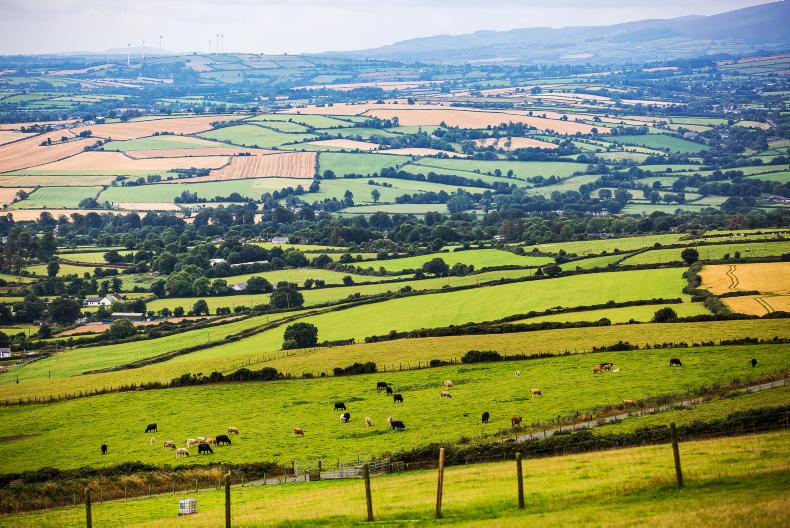
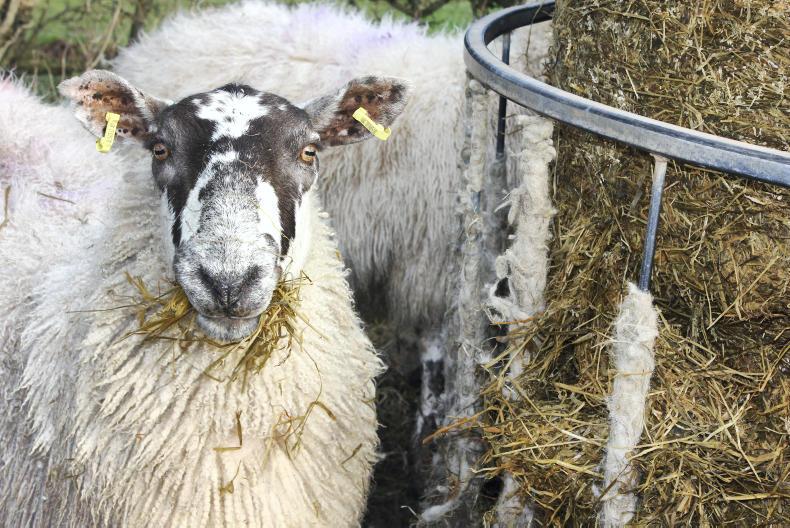

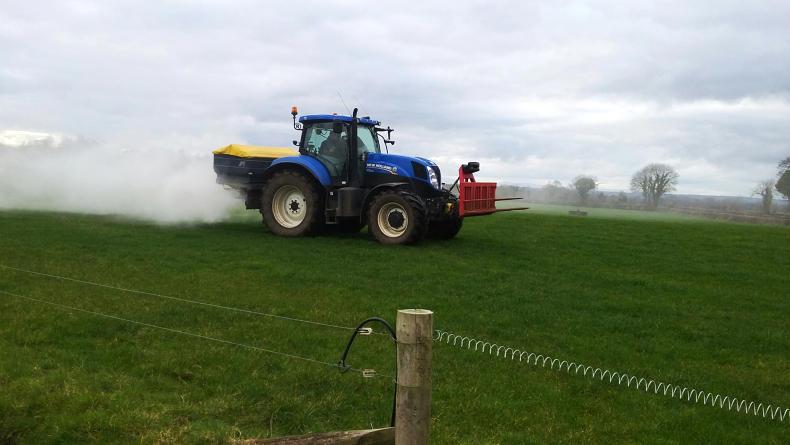
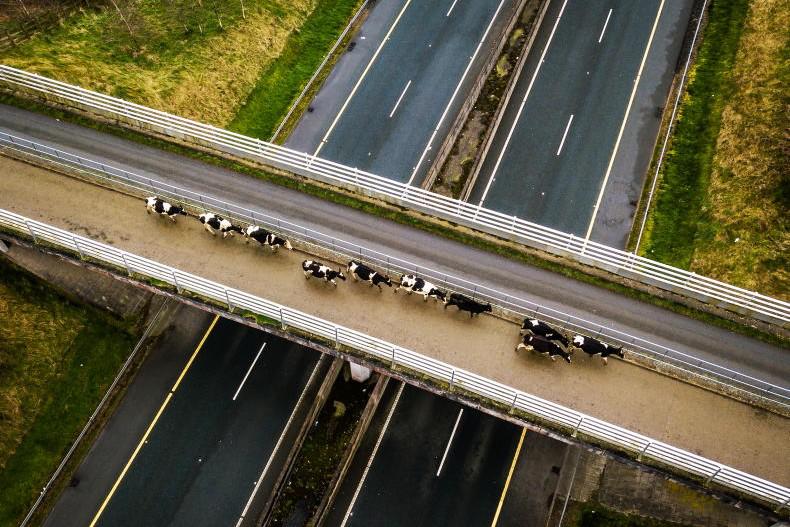
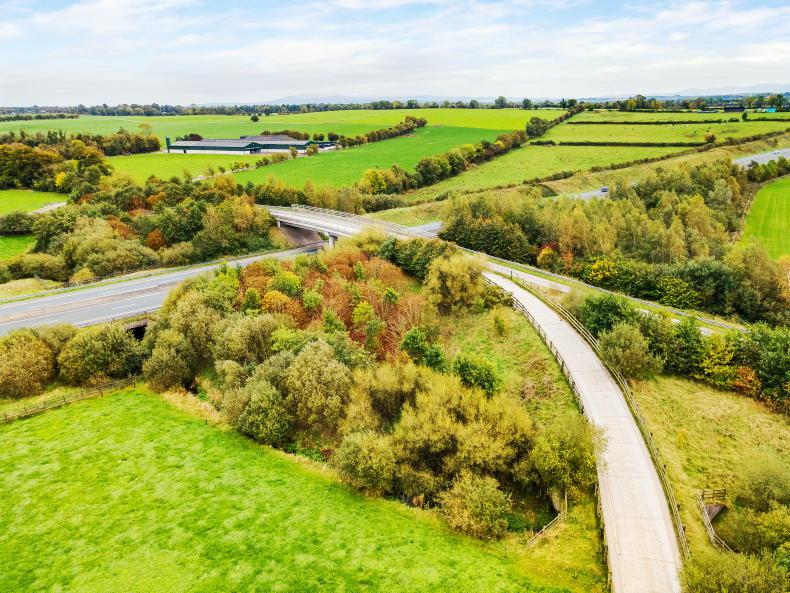
SHARING OPTIONS